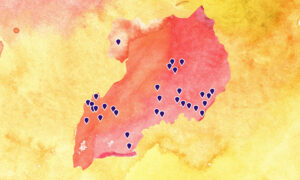Hello, you are using an old browser that's unsafe and no longer supported. Please consider updating your browser to a newer version, or downloading a modern browser.
Hello, you are using an old browser that's unsafe and no longer supported. Please consider updating your browser to a newer version, or downloading a modern browser.
Raising Voices developed the Good School Toolkit for primary schools over four years through an iterative and consultative process involving six Ugandan primary schools.
The Toolkit is currently in its third edition, with an adaptation completed for use in secondary schools and another underway—Good School Toolkit Agile—for an abbreviated introduction to core concepts.
Through engaging school-level activities, leadership workshops, and user-friendly tools and materials, the Toolkit aims to change a school’s operational culture. The ultimate goal? To prevent violence against children by enhancing their experience of school.
A rigorous evaluation through a randomized controlled trial—the Good School Study—showed that the Toolkit reduced children’s risk of experiencing physical violence by school staff by 42 percent over 18 months of implementation. Bolstered by this evidence, the Toolkit is currently being rolled out at scale in Uganda in 23 districts, with Raising Voices supporting more than 1,000 primary schools.
The Government of Uganda has distributed Toolkit materials to more than 5,000 schools nationwide. Raising Voices supports these scale-up efforts through relationships with local governments within districts where the Toolkit is being distributed, as well as through dialogues with schools, governments and international partners interested in using or adapting the Toolkit.

What is a “good school”? We believe it’s one with good teachers who increase student confidence and success, a learning environment that is safe and respectful, and a transparent, accountable administration. Our stepwise approach involves the entire ecosystem, including the parents and community members surrounding the school.
Every version of the Good School Toolkit involves six distinct steps that engage the entire school, with additional content created for Good School Toolkit Secondary.
The Toolkit also includes a collection of illustrated stories that introduce what it means to create a good school. Note that Booklet’s 5, 6 and 7 introduce more nuanced content that we developed for secondary schools only:
A collection of drawings in the Toolkit highlight the qualities of a good school: